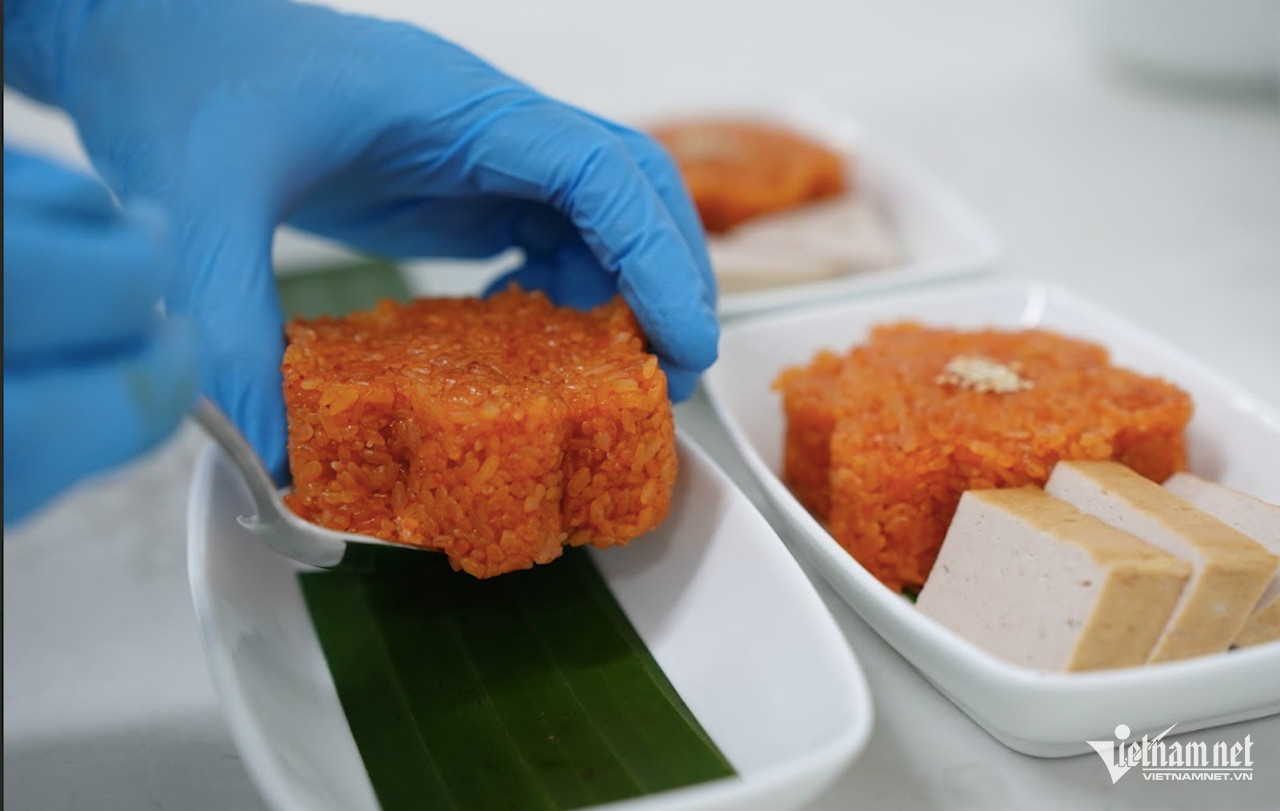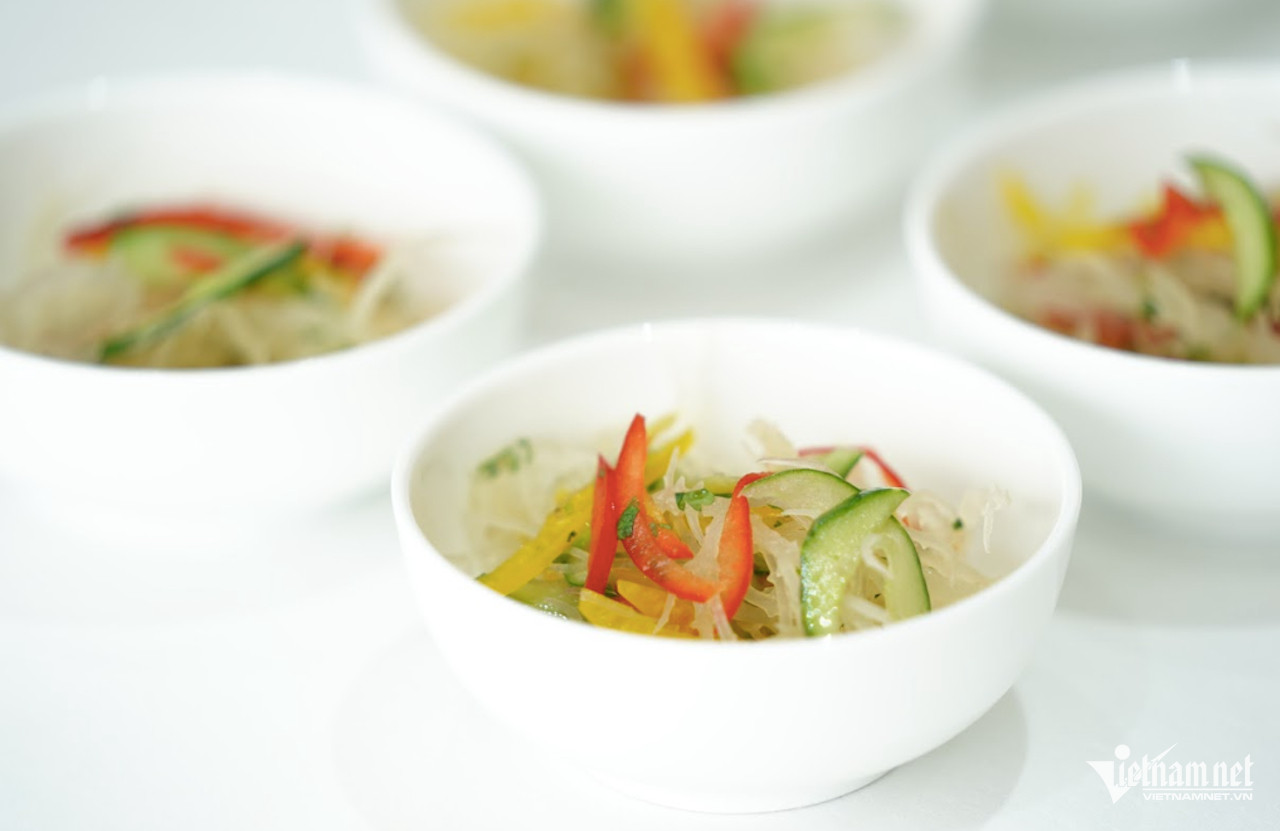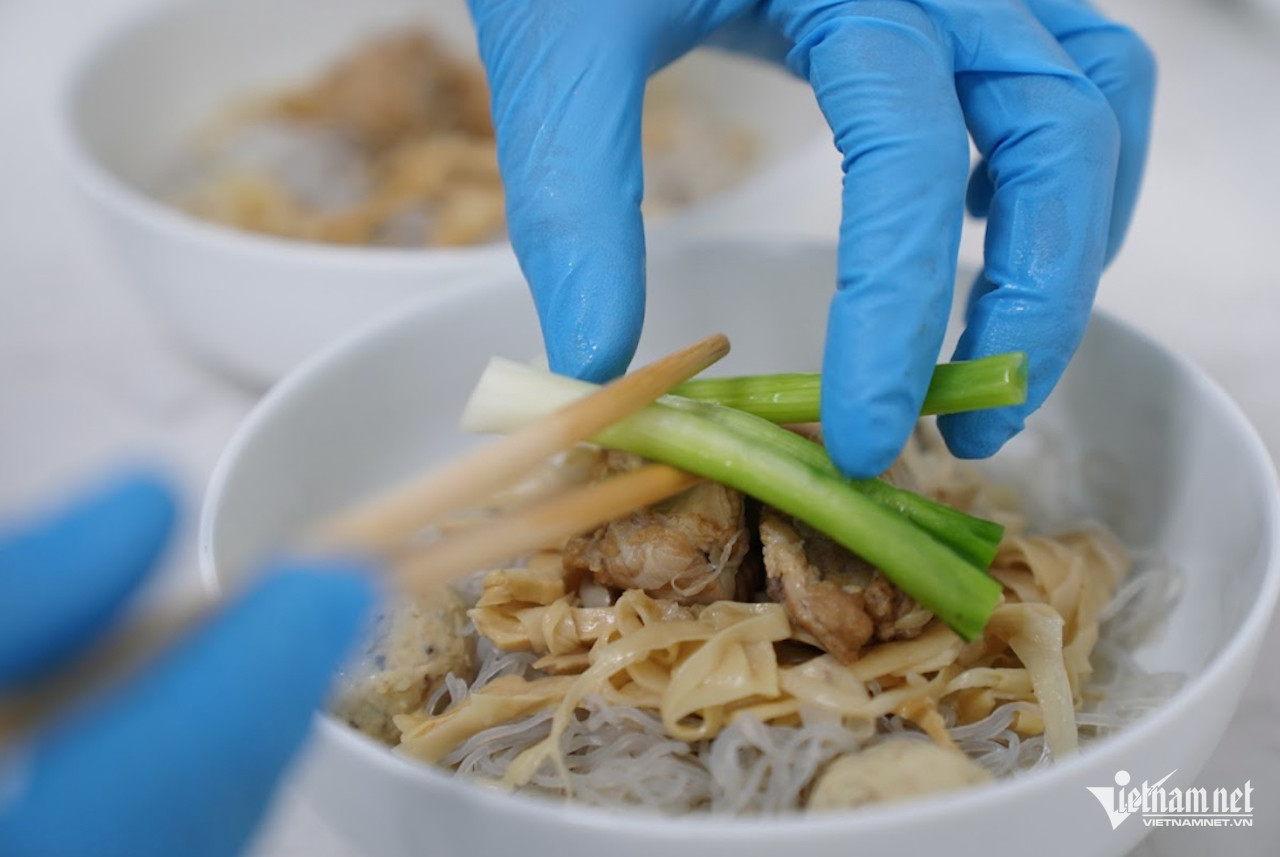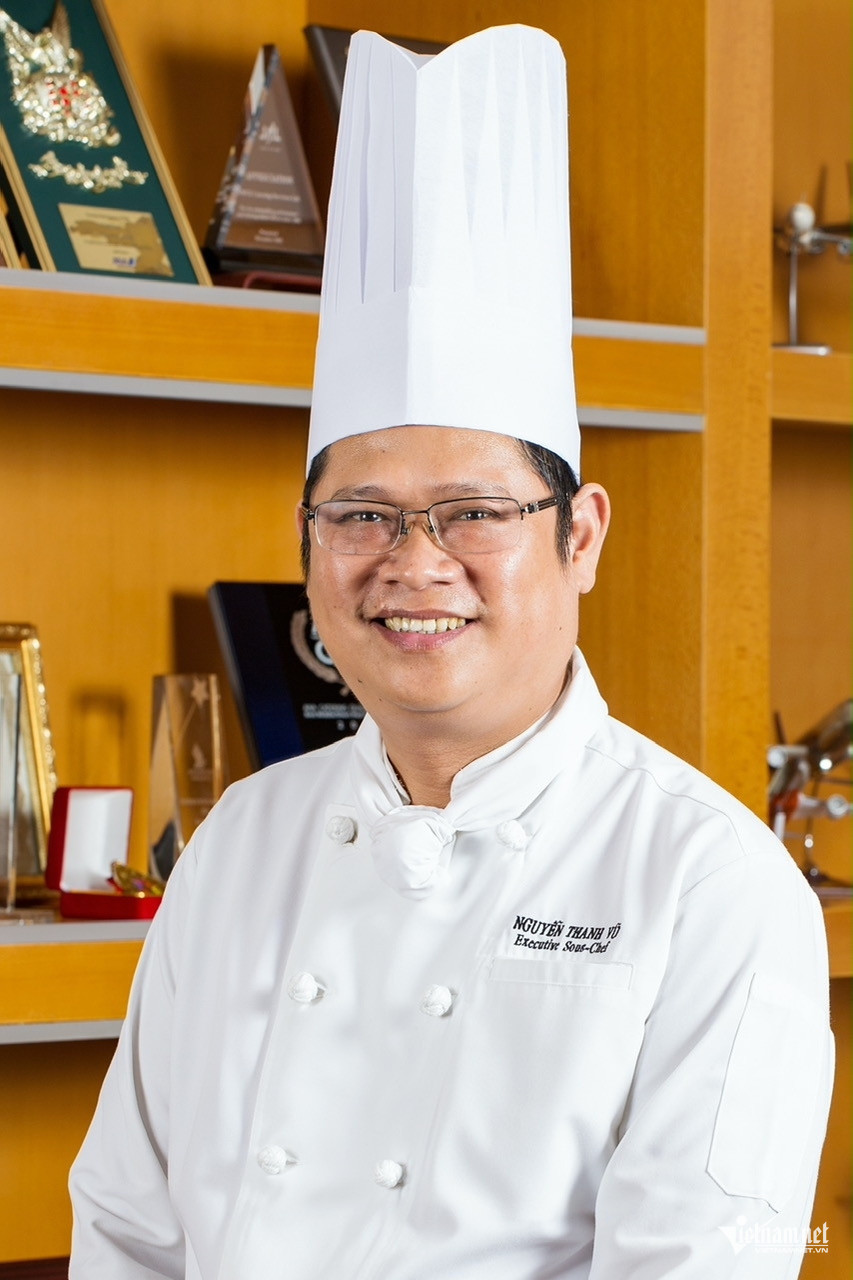
Having lived in Poland for over 20 years, Hang always longs for her homeland when spring arrives.
“The Vietnamese community in Poland still celebrates Tet, but it can never be as warm and festive as back home. For the past ten years, as our financial situation stabilized, my husband and I have made it a tradition to book tickets early and return to Vietnam for Tet,” Hang shared.
The journey itself has become a moment of reunion. From the hushed conversations of fellow passengers planning visits to relatives, to the delicate embroidery of peach blossoms on a child’s áo dài (traditional Vietnamese dress), every detail exudes the festive spirit. But what truly evokes nostalgia are the traditional Tet dishes served onboard.
Bringing Tet closer to the skies

“Just seeing a piece of banh chung (square sticky rice cake) or a bowl of bamboo shoot soup instantly brings back childhood memories. Every year, I get to celebrate Tet early on the plane. Enjoying Tet cuisine while floating above the clouds is always a special experience,” Hang said.
Traditional Tet dishes, though simple, carry the essence of Vietnamese culinary heritage. Recognizing this, domestic airlines have sought to bring these flavors to passengers.
A representative from Vietnam Airlines (VNA) explained that their inflight menu is carefully curated to reflect the festive season.
“We focus on Tet specialties such as banh chung, xoi gac (sticky rice with gac fruit, known for its vibrant red color), gio lua (Vietnamese pork sausage), gio xao (pork and mushroom terrine), cha (Vietnamese meatloaf), canh mang (bamboo shoot soup), and canh moc (meatball soup). We even include lesser-known traditional dishes like moc van am (five-color meatball soup), a Hanoi specialty that has gradually faded over time.
In addition to these classics, we offer contemporary dishes to cater to a diverse range of passengers, including children and international travelers,” the representative stated.
The art of crafting Tet menus

For Nguyen Thanh Vu, a chef with 29 years of experience designing airline meals at Vietnam Air Caterers (VACS), crafting the Tet menu is a meticulous process that takes three months.
“From brainstorming and testing recipes to presenting dishes for evaluation by the passenger services and cabin crew teams, each menu undergoes multiple rounds of feedback and refinement before it is finalized,” Vu explained.
Traditional Vietnamese dishes are given a festive twist, from their vibrant colors - reds and yellows symbolizing luck and prosperity - to decorative elements like xoi shaped into apricot blossoms or inscribed with the words Phúc - Lộc - Thọ (Happiness - Prosperity - Longevity).
“This year, our focus is on light, easy-to-eat Vietnamese dishes such as mien (glass noodles), rice, and sticky rice, which appeal to both Asian and European passengers.
We carefully balance carbohydrates, proteins, fats, and fiber, incorporating a variety of vegetables to enhance flavor and nutrition.
Special dietary needs are also accommodated, with options like vegetarian meals, low-sodium dishes, gluten-free selections, Halal-certified meals, and tailored servings for children and the elderly.
The menu is further adjusted based on flight duration and timing, ensuring passengers receive well-balanced meals whether they’re flying in the morning, afternoon, or evening,” Vu elaborated.
A delicate balance of tradition and innovation

Ensuring that dishes retain their flavor after reheating poses another challenge. Chefs meticulously select high-quality ingredients and design recipes suited to the reheating methods used on aircraft.
Each dish follows stringent production protocols to guarantee food safety. From ingredient selection to final preparation, every step adheres to the high standards of airline catering.
“We create standardized recipes detailing ingredient composition, precise measurements, and cooking methods.
Additionally, we establish strict guidelines for temperature control, portion sizes, and plating to maintain consistency.
Once cooked, the meals are rapidly cooled within four hours using blast chillers before being portioned according to exact specifications,” Vu described.
Despite preparing the same Tet dishes year after year, Vu finds endless inspiration in his craft.
“For 29 years, I’ve been designing Tet menus, yet I’ve never felt bored. Every year, I eagerly embrace the challenge of reimagining traditional flavors,” he shared with a smile.
N. Huyen